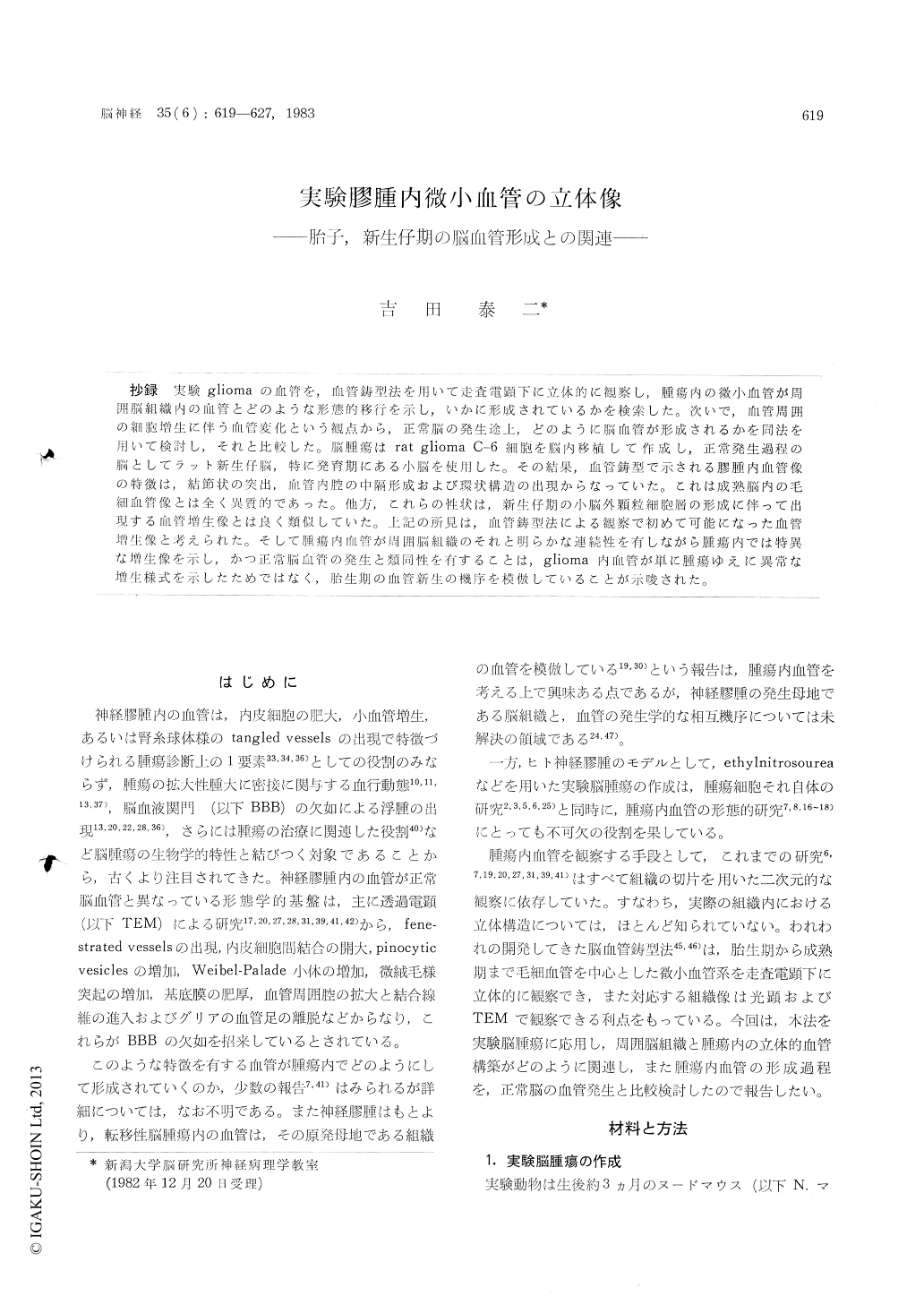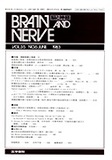Japanese
English
- 有料閲覧
- Abstract 文献概要
- 1ページ目 Look Inside
抄録 実験gliomaの血管を,血管鋳型法を用いて走査電顕下に立体的に観察し,腫瘍内の微小血管が周囲脳組織内の血管とどのような形態的移行を示し,いかに形成されているかを検索した。次いで,血管周囲の細胞増生に伴う血管変化という観点から,正常脳の発生途上,どのように脳血管が形成されるかを同法を用いて検討し,それと比較した。脳腫瘍はrat glioma C−6細胞を脳内移植して作成し,正常発生過程の脳としてラット新生仔脳,特に発育期にある小脳を使用した。その結果,血管鋳型で示される膠腫内血管像の特徴は,結節状の突出,血管内腔の中隔形成および環状構造の出現からなっていた。これは成熟脳内の毛細血管像とは全く異質的であった。他方,これらの性状は,新生仔期の小脳外顆粒細胞層の形成に伴って出現する血管増生像とは良く類似していた。 上記の所見は,血管鋳型法による観察で初めて可能になった血管増生像と考えられた。そして腫瘍内血管が周囲脳組織のそれとらかな連続性を有しながら腫瘍内では特異な増生像を示し,かつ正常脳血管の発生と類同性を有することは,g1ioma内血管が単に腫瘍ゆえに異常な増生様式を示したためではなく,胎生期の血管新生の機序を模倣していることが示唆された。
Three-dimensional vascular architecture of the experimental gliomas produced in adult nude mice by intracerebral inoculation of rat glioma C-6 cells (Benda et al., 1968) was studied through a scanning electron-microscope using the vascularcasting method (Yoshida & Ikuta, 1981), and compared with that of developing rat cerebellums.
It was observed that smoothly running blood vessels of identical diameter in the surrounding non-neoplastic nervous tissue were connected with extremely dilated and tortuous ones at the border of the neoplasm. In addition to the increased number of these branches, the vascular architecture in the glioma demonstrated characteristic nodular protrusions, or small ring-like anastomoses. Within the lumina, septum-like formations were formed.
On the other hand, it was found that surpri-singly similar vascular features were observed in the subarachnoid space of the developing external granular cell layer from birth until approximately 2 day after birth in the rat cerebellum. Then, after 4 days from birth, these features disappeared and resulted in numerous small vascular prolifera-tions.
The present study strongly suggests that the newly formed vessels in the gliomas are definitely "abnormal" compared with the vessels of normal adult animals, but that the process of vasculariza-tion in the glioma is based on the way of vascu-larization noticed in normal developing fetal and newborn brains.

Copyright © 1983, Igaku-Shoin Ltd. All rights reserved.


